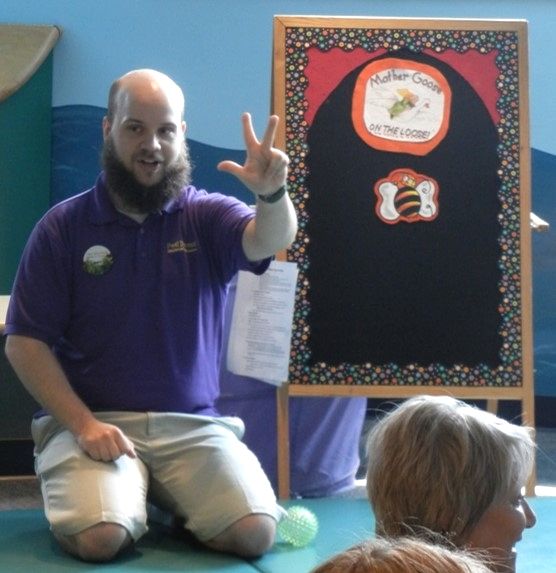Using the Flannel Board
Flannel boards are a staple of Mother Goose on the Loose.
Flannel boards are uncommon, and children love them. When you place felt pieces on flannel boards, the color contrast makes viewing quite easy. Felt is fuzzy, safe to touch, and attractive. Fur reminds children of their stuffed animals or their favorite blankies, so it they associate it with feelings of comfort and love. The way felt sticks to felt without needing any glue, pins, or staples, seems remarkable to children. They enjoy the magic of seeing a character appear and disappear with no fuss.
Because felt characters represent words and objects, using a flannel board with felt characters encourages children’s enjoyment of language and builds visual literacy. Children who can’t read learn how to look and decode the visual representations by relying on their personal experiences with it, for instance, by remembering that an oval shaped Humpty represents the rhyme “Humpty Dumpty” and connecting Humpty with the accompanying activity. Looking at a visual representation and interpreting it’s meaning is a prereading skill, since learning to read involves seeing letter and words and knowing how to decode them.
Looking at the felt characters enables them to construct meaning in the same way they will decode printed words when they are reading.
Because felt is easy to manipulate, when children are asked to put pieces on the board or pull them off, they can easily do so (even babies can use their grasping reflex to pull items off the flannel board). Flannel boards are also often used with children on the autism spectrum for creating visual schedules and social stories by allowing children to see and understand what to expect, easing transitions.




Because felt is easy to manipulate, when children are asked to put pieces on the board or pull them off, they can easily do so (even babies can use their grasping reflex to pull items off the flannel board). Flannel boards are also often used with children on the autism spectrum for creating visual schedules and social stories by allowing children to see and understand what to expect, easing transitions.
In addition, using felt pieces gives children something to focus on, which helps to keep their attention



